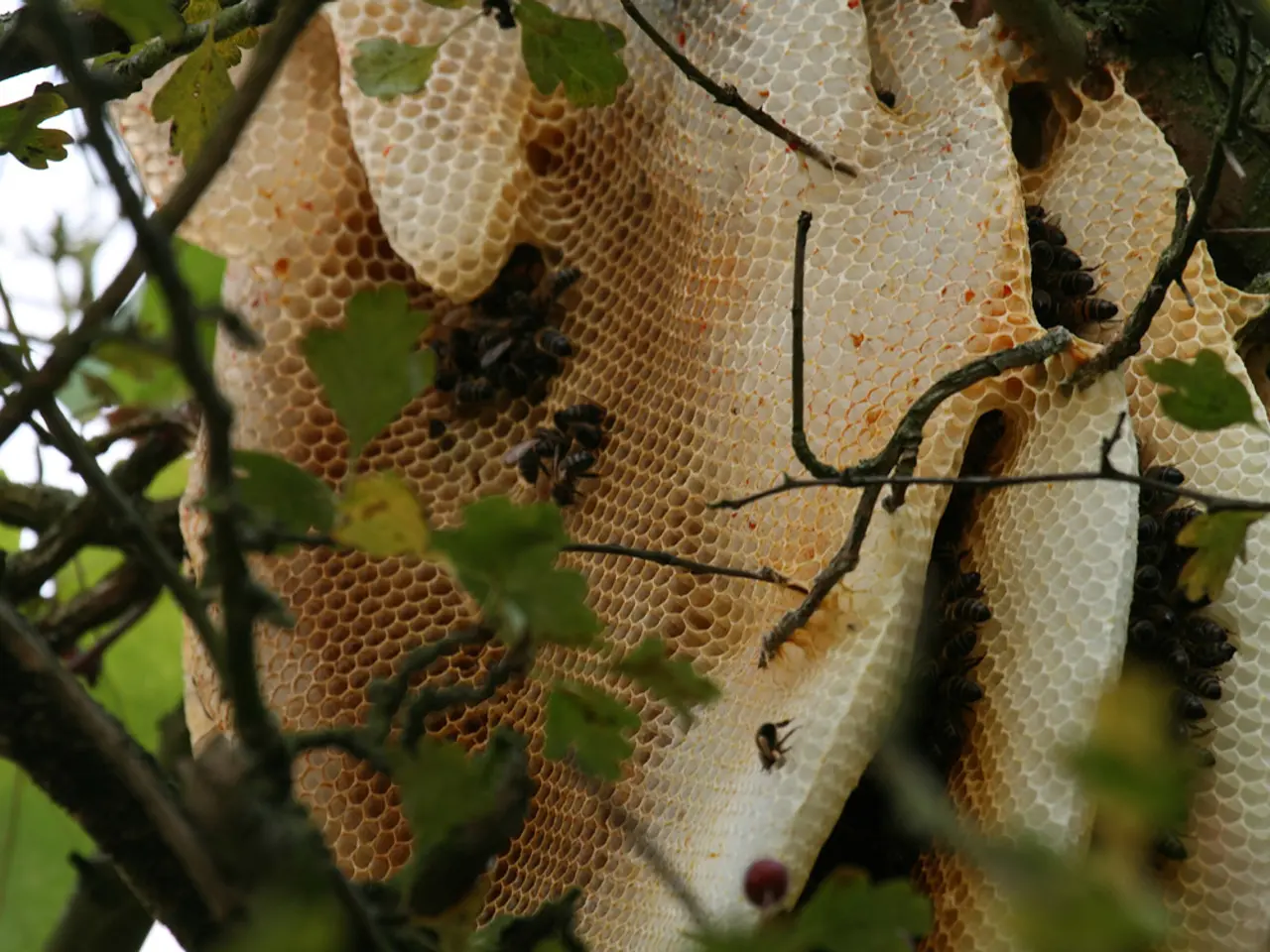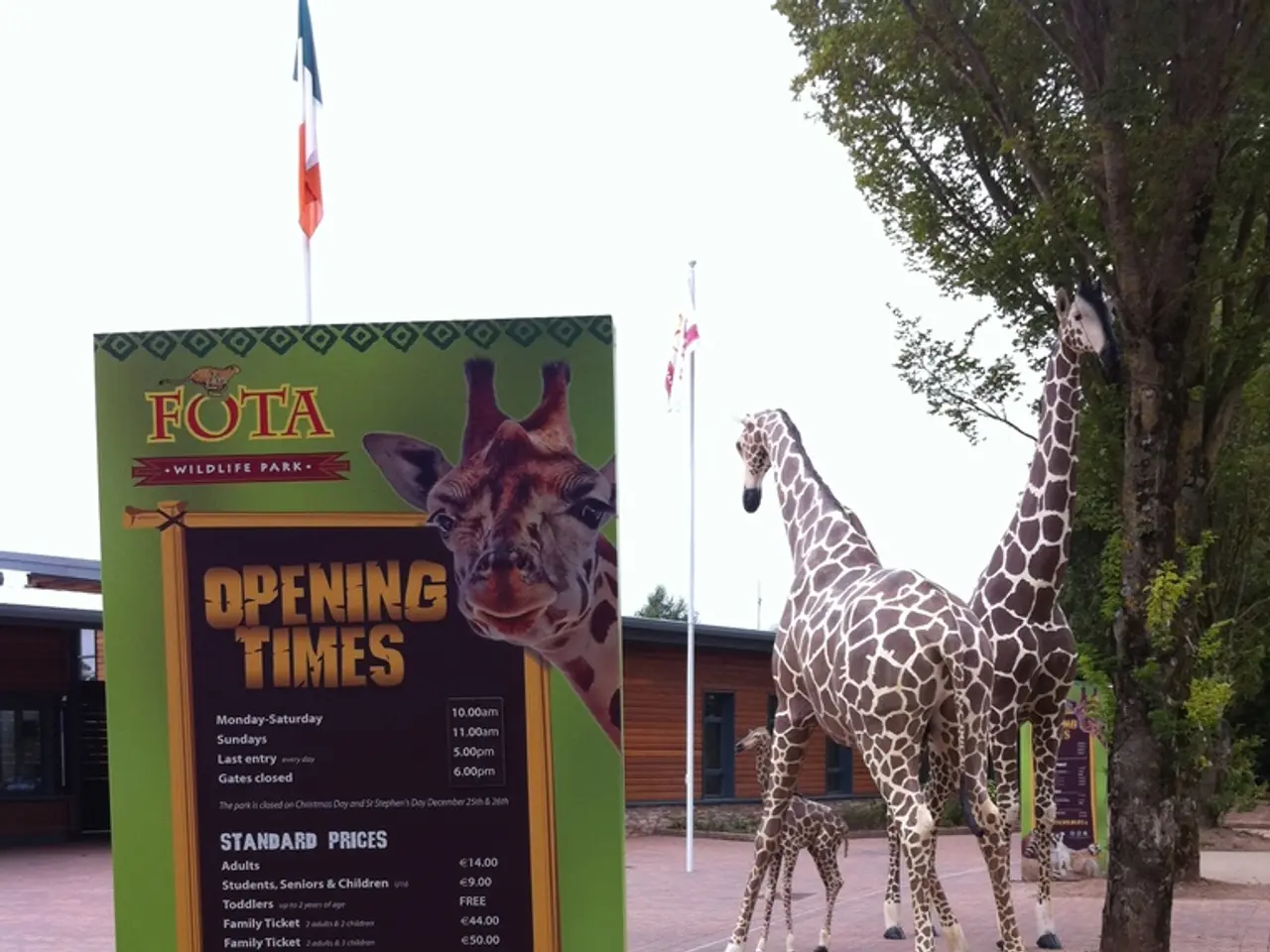Residence Reborn: The Garden
In a bid to promote garden biodiversity and attract various species, implementing sustainable and nature-friendly gardening practices is essential. These practices benefit wildlife, soil health, and ecosystem balance, creating a balanced, resilient garden ecosystem.
By creating diverse planting layers and plant species, gardeners can employ multistrata agroforestry, integrating trees, shrubs, herbs, and ground-level plants. This approach not only creates different habitats and food sources, attracting insects, birds, and small mammals, but also maximizes sunlight and soil resource use [1].
Using native, drought-resistant plants is another key strategy. Native species, adapted to your locality, provide natural food and shelter for local wildlife, including pollinators like bees and butterflies. Choosing these plants reduces water and chemical needs [2].
Installation of windbreaks and shelterbelts, comprising rows of tall trees or shrubs at garden edges, protects plants, reduces erosion, moderates microclimates, and offers habitat niches for beneficial birds and insects [1].
Creating riparian or water-buffer strips, planting trees, shrubs, and grasses along water features, filters runoff, prevents erosion, and supports aquatic and terrestrial ecosystems alike [1].
Practicing regenerative and organic soil care is crucial for building soil health. This includes adding compost, mulching, avoiding heavy tilling, and rotating or intercropping plants. Healthy soil supports diverse soil organisms, plants, and reduces vulnerability to pests and diseases [3].
Implementing companion planting, combining compatible plants that support each other's growth, attract beneficial insects, and repel pests naturally, boosts biodiversity and reduces chemical use [1].
Fostering pollinator-friendly habitats involves incorporating flowering plants that bloom throughout seasons to provide nectar and pollen, and avoiding pesticides that harm bees and butterflies [4][5].
Reducing chemical inputs and waste is another important aspect. Composting garden and kitchen waste to enrich soil organically, and using integrated pest management with beneficial insects to control pests sustainably, are effective strategies [2][4].
Water-wise landscaping techniques, such as drip irrigation, rainwater harvesting, rain gardens, and swales, manage garden water naturally, supporting plant health and wildlife without excess consumption [2].
These approaches not only create a balanced, resilient garden ecosystem but also contribute to broader environmental sustainability and beauty in your garden [1][2][3][4][5].
Interestingly, one native plant species can bring around ten animal species into the garden. Recommended bee plants include the apple tree (Malus), wild pear and wild apple, the European Holly (Ilex aquifolium), Heal-all (Glechoma hederacea), Common Bird Cherry (Prunus padus), Common Virginia Creeper (Parthenocissus inserta), Broom species like Common Broom (Cytisus scoparius), the Dwarf Cotoneaster (Cotoneaster horizontalis), and the sweet chestnut tree (Castanea sativa) [6].
Moreover, providing nesting aids is not enough for animal conservation; garden design also plays a crucial role. Pollen from other plants is necessary for plant pollination, and insects serve as pollen carriers [7].
Heal-all, a recommended bee forage plant, has a demulcent effect and promotes the optimal functioning of the stomach, gallbladder, and pancreas. It contains abundant essential oils, tannins, and bitter substances, such as marrubiin [8].
A book titled "Species Conservation in Your Own Garden" has been released in its second edition, offering insights into species conservation in one's own garden over approximately 178 pages [9]. As the summer ends, similar to the summers people longed for when Rudi Carell sang, it's a perfect time to reflect on the importance of garden biodiversity and consider implementing these sustainable practices.
By incorporating a variety of plants for different layers, like trees, shrubs, herbs, and ground-level plants, following the multistrata agroforestry technique, one can foster a home-and-garden lifestyle that naturally attracts diverse wildlife while efficiently using sunlight and soil resources [1]. Choosing native, drought-resistant plants for home-and-garden cultivation provides food and shelter for local wildlife, enhancing the lifestyle by contributing to garden biodiversity [2].




